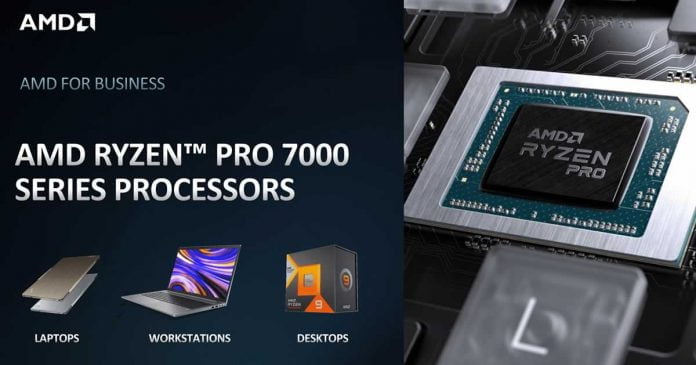In today’s digital age, having a strong online presence is crucial for any business. However, creating and maintaining a successful website or software application requires skilled developers who are experienced in the latest technologies. While it may be tempting to hire locally, offshore developers can offer numerous benefits, such as lower costs and access to a broader talent pool.
But how do you navigate the process of hiring an offshore software developer? In this complete guide, we’ll explore everything from finding the right remote team to establishing clear communication channels and ensuring the timely delivery of your project.
We’ll walk you through everything you need to know about how to hire dedicated offshore developers. We’ll cover the pros and cons of outsourcing, how to find the right partner, and what to consider before making a final decision.
There are many benefits to outsourcing your software development needs. First and foremost, it can save you a significant amount of money. Offshore development services are often much more affordable than working with domestic developers.
In addition, offshore developers can bring a fresh perspective to your project. They can offer new ideas and innovative solutions you may not have considered.
Of course, there are some risks of hiring offshore developers. Doing your homework and vetting potential partners carefully before signing on the dotted line is important.
What is Offshore Development?
Offshore development is the process of outsourcing software development to a third-party provider. This is usually done to save on costs, but it can also be done to improve quality or speed up the development process.
When done correctly, offshore development can be a great way to reduce costs and get your project completed faster. However, there are some risks involved. Here are some things you should consider before hiring an offshore developer:
- Make sure you clearly understand what you want developed. Offshore developers will often work from specs, so it’s important that you have a detailed document outlining exactly what you need to develop. Otherwise, you may not get the results you’re expecting.
- Do your research and choose a reputable provider. There are many fly-by-night offshore development companies out there, so it’s important that you choose one that has a good reputation and can provide references from happy clients.
- Make sure you have good communication channels in place. Good communication is essential for any project, but it’s even more important when working with an offshore team. Be sure to set up regular check-ins and have a clear process for handling questions or issues that come up during the project.
- Be prepared for cultural differences. Offshore developers may come from a different culture than yours, so be prepared for some potential misunderstandings. Again, good communication is key to overcoming these differences.
Why Should You Hire an Offshore Developer?
There are many reasons why you need to hire an offshore developer. Cost is often the primary factor, as developers in countries with a lower cost of living can be hired for a fraction of the price of their counterparts in developed countries.
Offshore developers also often have a more comprehensive range of skills and experience than those available locally. This is because they typically work on various projects for clients from all over the world, giving them exposure to different technologies and methodologies.
Another advantage of hiring an offshore developer is that they can provide flexible staffing solutions. For example, if you have a project that requires more person-hours than you have internally, an offshore developer can be brought in to supplement your team and help get the job done.
Working with an offshore developer can be beneficial from a cultural perspective. It can help you learn about new cultures and ways of doing things and give you a new perspective on your business practices.
How to Find and Hire an Offshore Developer
If you’re looking to hire an offshore developer, there are a few things you’ll need to keep in mind. First, you’ll need to find a reputable developer that has a good portfolio and reviews. Once you’ve found a few developers that meet your criteria, you’ll need to reach out to them and get pricing quotes. Once you’ve received quotes from a few different developers, you can start the process of interviewing and hiring your developer.
When it comes to finding an offshore developer, there are a few different ways you can go about it. You can search online directories like Upwork or Freelancer, or you can post a job listing on one of these platforms. You can also contact companies that specialize in offshore development and request a list of their developers. Whichever method you choose, carefully vet any potential developers before moving forward with them.
Once you’ve found a few potential developers, the next step is to reach out to them and get pricing quotes. Be sure to explain your project in detail and ask for specific pricing for the work that needs to be done. If possible, try to get quotes from multiple developers so you can compare rates. Once you’ve got quotes from a few different developers, the next step is to start interviewing them.
When interviewing potential developers, it’s important to ask questions about their experience working on similar projects. You should also ask about their availability and turnaround time for your project. Be sure to explain your
Understanding Your Needs for Quality Outputs
When outsourcing your development work, it’s important to take the time to understand your specific needs and what kind of quality outputs you expect from your developers. This will help ensure that you find the right team for the job and avoid any disappointing surprises down the road.
To start, sit down and make a list of everything that’s important to you in terms of the quality of the final product. This might include code quality, timely delivery, bug-free software, etc. Once you understand your own Quality Output requirements, you can begin to look for developers who can meet them.
There are a few different ways to go about this. One is to simply ask for referrals from friends or colleagues who have had good experiences with offshore developers. Another option is to post a job listing on a freelancer platform like Upwork, specifying your Quality Output requirements in detail. Developers interested in working with you will then respond with their proposals, including information on their experience and rates.
Once you’ve found a few developers who seem like they might be a good fit, it’s time to get in touch and start asking some questions. Be sure to inquire about their previous experience with projects similar to yours, as well as their understanding of your specific Quality Output requirements. It’s also a good idea to ask for samples of their work so that you can get an idea.
Cooperation Models with an Offshore Development Team
There are many ways to cooperate with an offshore development team. The most common and popular method is the so-called “waterfall” approach, where each stage of development is completed before the next one begins. This ensures that everyone understands what needs to be done and when, but it can be inflexible if changes need to be made during the project.
The “agile” methodology is becoming increasingly popular, allowing for more flexibility and adaptability during the development process. This means that cooperation between the client and the offshore team needs to be more open and continuous, as both parties need to be able to react quickly to changes.
Whatever cooperation model is used, communication is always going to be key. Make sure that you clearly understand each other’s expectations and capabilities, and agree on regular update meetings or calls so that everyone is always aware of what is happening with the project.
Considerations Before Hiring a Team of Developers
Before you begin the process of hiring an offshore development team, there are a few key factors that you need to take into account. By doing your homework upfront, you can ensure a smooth and successful working relationship with your developers. Here are some things to consider before making the hire:
- Define Your Project Scope & Goals. The first step is to clearly define your project’s scope and goals for the finished product. When you know what you want to achieve, finding the right team of developers who can help you reach your objectives will be easier.
- Research Potential Vendors. Once you understand your project scope and goals well, it’s time to start researching potential vendors. There are a number of ways to do this, including online directories, word-of-mouth recommendations, and online reviews.
- Evaluate Each Vendor’s Capabilities. After narrowing down your list of potential vendors, it’s important to evaluate each one’s capabilities. This includes looking at their past work experience, their portfolio of projects, and any testimonials or reviews from previous clients.
- Determine Your Budget & Payment Structure. Budget is always an important consideration when hiring any type of professional services. When evaluating offshore development teams, be sure to ask about their billing rates and payment structure options up front. This will help avoid any surprises down the road.
Final Thoughts: Is Offshore Development the Right Choice for Me & My Business?
Is offshore development the right choice for you and your business? It’s a tough question to answer, and there are pros and cons to consider. Here are some final thoughts to help you make your decision:
Offshore development can be a great way to get high-quality software development at a lower cost. But it’s not right for every business. You need to carefully consider your needs and whether or not offshore development is the right fit.
Here are some things to think about when deciding if offshore development is right for you:
What type of project do you need to develop? Offshore developers are often good at complex projects that require a lot of coding. If you have a simple project, it might be better to find someone local who can do it more cheaply and quickly.
How much money are you willing to spend? Offshore developers tend to charge by the hour, so your costs will depend on the size and complexity of your project. Make sure you understand the pricing structure before you commit to anything.
How important is quality? Offshore developers can sometimes cut corners to save time and money. If quality is important to you, make sure you choose a reputable company with a good track record.
Are you comfortable communicating online? Since offshore developers work remotely, communication is key. Make sure you’re comfortable communicating via email, chat, or video conferencing before you commit to anything.











